l
Project overview
l
Problem
Grocery stores currently lack options to avoid the production and usage of single-use plastics. Better solutions are needed to fulfill their needs of establishing an eco-friendly brand image.
Goal
The goal of this project is to develop a concept for a machine that refills bottles that can stimulate and create an alternative for users to reduce the use of single-use plastics.
My role & responsibility
User Researcher
UX and UI designer
Product designer
Project duration
4 months
l
Context & User Research
l
Miscellaneous research was conducted to establish the mood and to set the requirements of this design project.
Primary Research
Our team visited multiple Tesco supermarkets to investigate the atmospheres and to collect some first hand data from observation and interviews. We extracted the values from key findings and translated them to requirements.


Secondary Research
By gathering information about competitors in the market, assessing their strengths and weaknesses we could strategize competitive advantage of our product.
For additional viability requirements, research on the business aspects was crucial which included the exploration of the markets, the customer segments and value propositions.


l
UX/UI Development
l
Wireframes Ideation
We began our ideation by brainstorming wireframes acknowledging the users' habit.
We worked on flowcharts to map out all the steps and visualized different layout options for each page to make it easy to evaluate.



UI Components
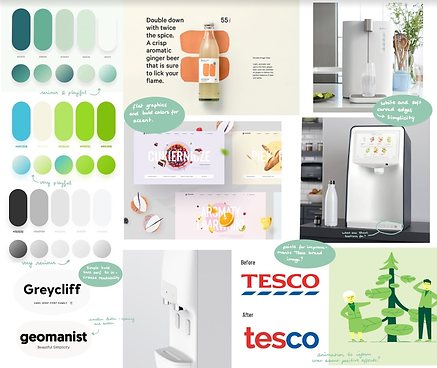

Above is the style guide that reflects the current UX trends and serves our minimalistic concept with the soft pastel colors. Additionally, we recreated some of the UI elements such as icons to be suitable for what we were aiming towards.
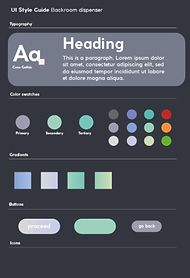

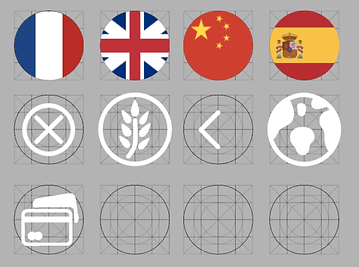
Evolution of the concept
Images below illustrates how our interface design developed throughout the weeks.




We concluded on what we have perceived to increase the usability. For instance, the components of the wireframes were placed in a consistent way throughout the whole interface.
Simultaneously, we also dived more into the visuals and the aesthetics. We experimented with different styles and applied the 70:20:10 rule.



l
Product case Development
l
Case Ideation & Development
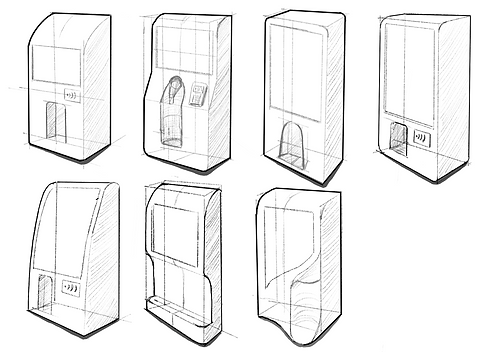
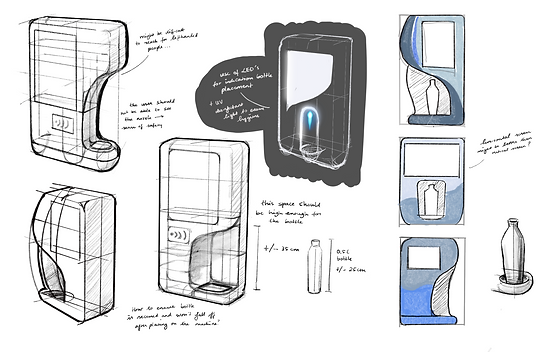
Ideations on different forms and functions of the case were evaluated based on the requirements which were set by the user characteristics. To accumulate the public in most optimal way, numerous factors were looked into including ergonomic aspects.

.jpeg)
During this phase, we wanted to test our designs to conclude the best set of solutions. Due to COVID-19, we could only make our prototypes with limited resources.
Hence, we made a prototype of the machine using cardboard boxes to make the testing experience more complete.



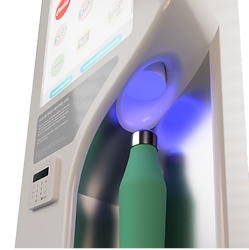
The UV disinfectant light was implemented as cleaning method for the casing design. The final version includes a complete and working interface and a suggestion for the form of the casing.
l
Final thoughts
l
Right is the final prototype incorporated with animation.
Throughout this project, I was able to exercise my design skills in aggregative forms as this project demonstrates the alliance of UX/UI design and the case product. It was also a chance for us to think about what needs to be considered for inclusivity when placed in public environment.



